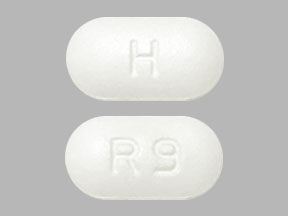Ritonavir Disease Interactions
There are 5 disease interactions with ritonavir.
PIs (applies to ritonavir) hemophilia
Moderate Potential Hazard, Moderate plausibility. Applicable conditions: Coagulation Defect
There have been reports of increased bleeding, including spontaneous skin hematomas and hemarthrosis, in patients with hemophilia type A and B treated with protease inhibitors; however, a causal relationship has not been established. In some patients, additional factor VIII was given. In more than half of the reported cases, protease inhibitor therapy was continued or reintroduced. Patients with hemophilia or other coagulation defects should be monitored closely for bleeding during protease inhibitor therapy.
PIs (applies to ritonavir) hyperglycemia
Moderate Potential Hazard, Moderate plausibility. Applicable conditions: Abnormal Glucose Tolerance, Diabetes Mellitus
New onset diabetes mellitus, exacerbation of preexisting diabetes mellitus, hyperglycemia, and some cases of diabetic ketoacidosis have been reported during postmarketing surveillance in HIV-infected patients treated with protease inhibitors. Some patients required either initiation or dosage adjustments of insulin or oral hypoglycemic agents for treatment of these events. In some cases, hyperglycemia persisted despite discontinuation of protease inhibitor therapy. A causal relationship has not been established between protease inhibitor therapy and these events. Monitoring patients for hyperglycemia, new onset diabetes mellitus, or exacerbation of diabetes mellitus should be considered during protease inhibitor therapy.
PIs (applies to ritonavir) hyperlipidemia
Moderate Potential Hazard, Moderate plausibility.
Treatment with ritonavir alone or in combination with other protease inhibitors (e.g., lopinavir, saquinavir, tipranavir, fosamprenavir) has resulted in substantial increases in the concentration of total cholesterol and triglycerides. These effects have also been reported with other protease inhibitors but may be the most dramatic with ritonavir. The clinical significance of these elevations is unclear. Marked elevation in triglyceride levels is a risk factor for development of pancreatitis. Triglyceride and cholesterol testing is recommended before starting ritonavir (with or without other protease inhibitors) and periodically during therapy. Lipid disorders should be managed as clinically appropriate.
Ritonavir (applies to ritonavir) heart block
Moderate Potential Hazard, Moderate plausibility. Applicable conditions: Heart Disease
Ritonavir may prolong the PR interval in some patients. Postmarketing cases of second or third degree atrioventricular block have been reported. Ritonavir should be administered with caution in patients with underlying structural heart disease, preexisting conduction abnormalities, ischemic heart disease, and cardiomyopathies as these patients might be at increased risk for developing cardiac conduction abnormalities.
Ritonavir (applies to ritonavir) hepatotoxicity
Moderate Potential Hazard, Moderate plausibility. Applicable conditions: Liver Disease
Hepatotoxicity (including jaundice, clinical hepatitis, and hepatic transaminase elevations exceeding 5 times the upper limit of normal) has been reported in patients receiving ritonavir alone or in combination with other antiretroviral drugs. Ritonavir should be administered with caution in patients with preexisting liver diseases, liver enzyme abnormalities, or hepatitis; increased monitoring of AST/ALT should be considered in these patients, especially during the first 3 months of ritonavir therapy. Ritonavir is not recommended for use in patients with severe liver dysfunction.
Switch to professional interaction data
Ritonavir drug interactions
There are 696 drug interactions with ritonavir.
Ritonavir alcohol/food interactions
There are 2 alcohol/food interactions with ritonavir.
More about ritonavir
- ritonavir consumer information
- Check interactions
- Compare alternatives
- Pricing & coupons
- Reviews (3)
- Drug images
- Side effects
- Dosage information
- During pregnancy
- Drug class: antiviral boosters
- Breastfeeding
- En español
Related treatment guides
Drug Interaction Classification
| Highly clinically significant. Avoid combinations; the risk of the interaction outweighs the benefit. | |
| Moderately clinically significant. Usually avoid combinations; use it only under special circumstances. | |
| Minimally clinically significant. Minimize risk; assess risk and consider an alternative drug, take steps to circumvent the interaction risk and/or institute a monitoring plan. | |
| No interaction information available. |
See also:
Further information
Always consult your healthcare provider to ensure the information displayed on this page applies to your personal circumstances.


